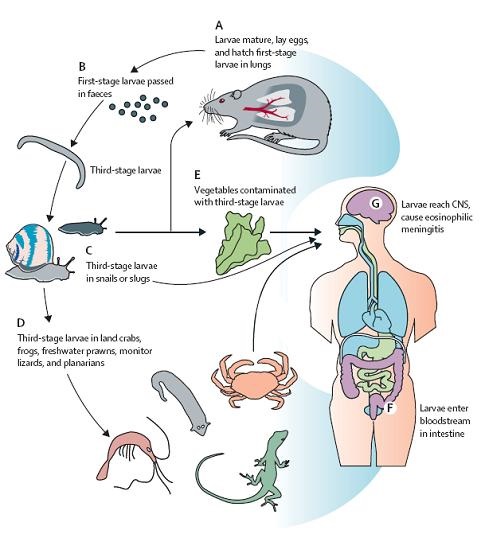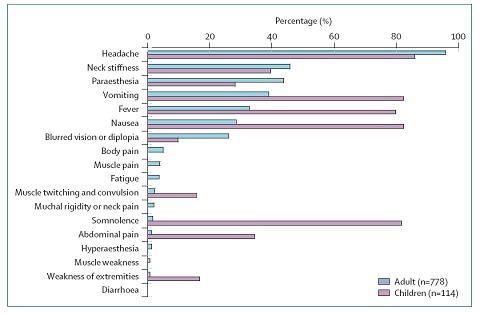

Correct!
1. Angiostrongylus cantonensis
Angiostrongylus cantonensis (rat lung worm) is a neurotrophic nematode which is one of the most common causes of eosinophilic meningitis. Rats are the primary hosts for this parasite. Snail, slugs, fresh water prawns, land crabs and various other hosts act as intermediate hosts. Human infections are due to the accidental ingestion of the third stage larvae by eating slugs, other intermediate hosts, or unwashed plants contaminated with snail slime (Figure 2).

Figure 2. Life cycle of Angiostrongylus cantonensis (1).
Once Ingested the third stage larva migrates to the CNS and develops in to an adult from. The migration and development in the CNS results in intense symptomatic meningitis. Adult worms eventually die in CNS though on rare occasions may migrate to the vitreous humor of the eyes. Infected patients present with typical symptoms of meningitis with headache, fever and somnolence in children. Adults have headache, neck stiffness, parenthesis and quite rarely muscle weakness (Figure 3).

Figure 3: Clinical symptoms and signs of human angiostrongyliasis with eosinophilic meningitis (1).
Most cases of human angiostrongyliasis have been reported from China, Southeast Asia, and the Pacific Islands. However, widespread travel and shipping has resulted in the dissemination of the infection to other areas of the world and the infection is now thought to be endemic in the southern United States, the Caribbean, and the Amazon basin (1-8). Cases are increasingly being reported in the United States and angiostrongyliasis is now the most common infective cause of eosinophilic meningitis in the US.
Which of the following are appropriate?